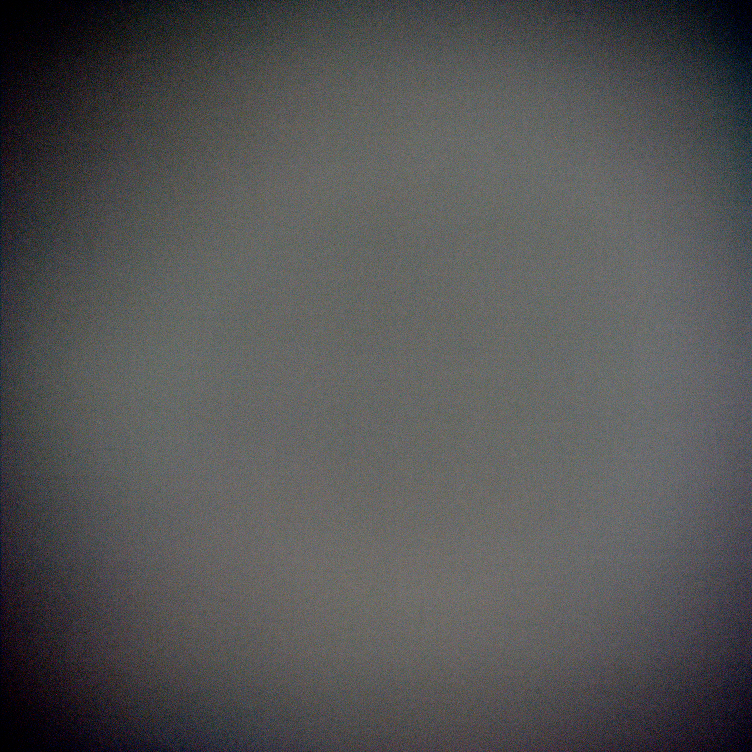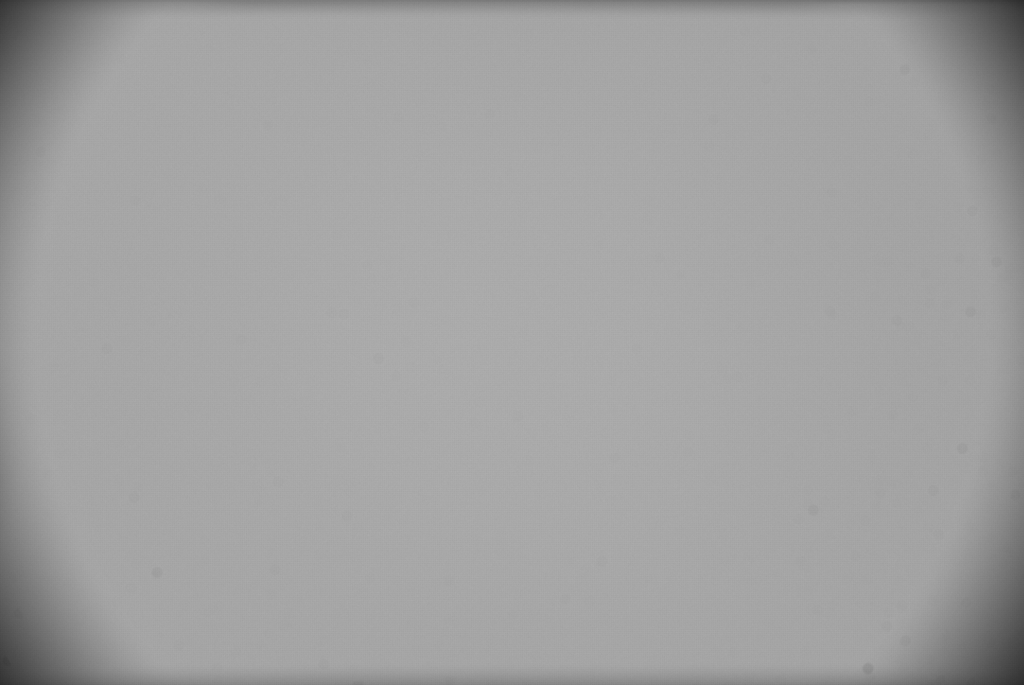Hi all,
For a while ago i tried taking some flatframes with my new 533MC Pro.
They looked like this:

So i followed Astro Babys guide to collimation: https://www.astro-baby.com/astrobaby/help/collimation-guide-newtonian-reflector/
After that i tried inserting a Howie Glatter laser in the focuser with a Baader Clicklock, and the laser beam was not hitting the center spot, since everything was collimated along the lines of Astro Babys guide i assumed the focuser was tilted, so i shimmed the focuser with 2 washers under the 2 upper screws which almost centered the laserbeam on the primary center spot. I checked collimation again to make sure nothing had changed.
I then tried taking a flat frame again, it looked like this:

So much better, but i wonder, is this good enough? Will image-quality suffer in some way due to the field illumination not being 100% even?
My setup:
200PDS
ES HR Coma Corrector
Stock focuser
Baader Clicklock
533MC Pro
Clear skies
Gabriel
|
You cannot like this item. Reason: "ANONYMOUS".
You cannot remove your like from this item.
Editing a post is only allowed within 24 hours after creating it.
You cannot Like this post because the topic is closed.
I believe that the whole point of flat frames is to even out the field illumination and remove unwanted artifacts such as dust spots. My flat frames look like this and I get pretty even illumination before doing background extraction. |
You cannot like this item. Reason: "ANONYMOUS".
You cannot remove your like from this item.
Editing a post is only allowed within 24 hours after creating it.
You cannot Like this post because the topic is closed.
I believe that the whole point of flat frames is to even out the field illumination and remove unwanted artifacts such as dust spots. My flat frames look like this and I get pretty even illumination before doing background extraction.
Makes sense, thank you for the quick reply! 🙏👍
|
You cannot like this item. Reason: "ANONYMOUS".
You cannot remove your like from this item.
Editing a post is only allowed within 24 hours after creating it.
You cannot Like this post because the topic is closed.
|
I realize i might be asking the wrong question, i think this would be more accurate: Is the above level of off centered vignetting acceptable or should i try to get it spot on? Is off centered vignetting a sign of tilt or could it mean something else?
|
You cannot like this item. Reason: "ANONYMOUS".
You cannot remove your like from this item.
Editing a post is only allowed within 24 hours after creating it.
You cannot Like this post because the topic is closed.
the only real test is to take exposures and calibrate them using these flats, however they don't look too bad to me. I have had significant corner vignetting on one of my filters similar to your first shared picture and everything calibrated fine.
Taking exposures and measuring the starfield will indicate if you have real tilt/collimation issues.
|
You cannot like this item. Reason: "ANONYMOUS".
You cannot remove your like from this item.
Editing a post is only allowed within 24 hours after creating it.
You cannot Like this post because the topic is closed.
Sean van Drogen:
the only real test is to take exposures and calibrate them using these flats, however they don't look too bad to me. I have had significant corner vignetting on one of my filters similar to your first shared picture and everything calibrated fine.
Taking exposures and measuring the starfield will indicate if you have real tilt/collimation issues.
So as long as they calibrate trying to get the vignetting centered does not achieve anything meaningful?
|
You cannot like this item. Reason: "ANONYMOUS".
You cannot remove your like from this item.
Editing a post is only allowed within 24 hours after creating it.
You cannot Like this post because the topic is closed.
Gabriel Wiklund:
Sean van Drogen:
the only real test is to take exposures and calibrate them using these flats, however they don't look too bad to me. I have had significant corner vignetting on one of my filters similar to your first shared picture and everything calibrated fine.
Taking exposures and measuring the starfield will indicate if you have real tilt/collimation issues.
So as long as they calibrate trying to get the vignetting centered does not achieve anything meaningful?
Actually the quality of vignetting, how it looks and whether centered or not, shows exactly what your scope sees. So when you take shots, every single shot will be affected by this same vignette. Then, when you afterwards take flats with the exact same settings and rotation of the camera, you simply image this vignetting. This vignette images are stacked into a 'master flat' which will than be applied to each single lightframe while calibrating / stacking. So your stacked sum image will be vignette free.
Tilt and collimation is an issue of the optical train. The appearance of your flats will point out any related issues - as you already know. So, even if you would take images through a bad collimated and tilted optical system, the flatframes will show exactly the vignetting produced by this 'badly' adjustetd optical train ... but will remove the worst vignetting anyway.
|
You cannot like this item. Reason: "ANONYMOUS".
You cannot remove your like from this item.
Editing a post is only allowed within 24 hours after creating it.
You cannot Like this post because the topic is closed.
Gabriel Wiklund:
Sean van Drogen:
the only real test is to take exposures and calibrate them using these flats, however they don't look too bad to me. I have had significant corner vignetting on one of my filters similar to your first shared picture and everything calibrated fine.
Taking exposures and measuring the starfield will indicate if you have real tilt/collimation issues.
So as long as they calibrate trying to get the vignetting centered does not achieve anything meaningful?
Actually the quality of vignetting, how it looks and whether centered or not, shows exactly what your scope sees. So when you take shots, every single shot will be affected by this same vignette. Then, when you afterwards take flats with the exact same settings and rotation of the camera, you simply image this vignetting. This vignette images are stacked into a 'master flat' which will than be applied to each single lightframe while calibrating / stacking. So your stacked sum image will be vignette free.
Tilt and collimation is an issue of the optical train. The appearance of your flats will point out any related issues - as you already know. So, even if you would take images through a bad collimated and tilted optical system, the flatframes will show exactly the vignetting produced by this 'badly' adjustetd optical train ... but will remove the worst vignetting anyway.
Thanks, informative!
I think i will wait for the stars, then i will know if i have round stars over the entire field or not.
|
You cannot like this item. Reason: "ANONYMOUS".
You cannot remove your like from this item.
Editing a post is only allowed within 24 hours after creating it.
You cannot Like this post because the topic is closed.
|
You can have a perfectly collimated scope and still have uneven vignetting. By sliding the secondary mirror along its reflective plane, you can change illumination while keeping perfect collimation. The only test that matters is a star test. Take images of a star that is slightly defocused and use that to check collimation. Also, take an image of a star field and measure the fwhm and eccentricty across the field.
|
You cannot like this item. Reason: "ANONYMOUS".
You cannot remove your like from this item.
Editing a post is only allowed within 24 hours after creating it.
You cannot Like this post because the topic is closed.
The cause for the off-centred vignetting is most likely that the secondary mirror is not perfectly centred under the focuser, but is instead itself slightly off-centre. Either along the main axis of the scope or towards one of the sides. Or possibly even both.
The good news is, this is the least crucial of collimation errors as it most likely won't noticeably distort the corners of the image. And the uneven illumination will get calibrated out of your stacked images with flat frames. So it's nothing to be too concerned about.
Of course you can try correcting it with better secondary mirror collimation until you centre it perfectly. But you're probably going to have a hard time getting accurate enough by sight alone. Your best bet would be to use an electronic collimator, something like OCAL.
|
You cannot like this item. Reason: "ANONYMOUS".
You cannot remove your like from this item.
Editing a post is only allowed within 24 hours after creating it.
You cannot Like this post because the topic is closed.
|
Very helpful answers, much appreciated. I feel i have the complete picture now!
|
You cannot like this item. Reason: "ANONYMOUS".
You cannot remove your like from this item.
Editing a post is only allowed within 24 hours after creating it.
You cannot Like this post because the topic is closed.
to create to post a reply.






